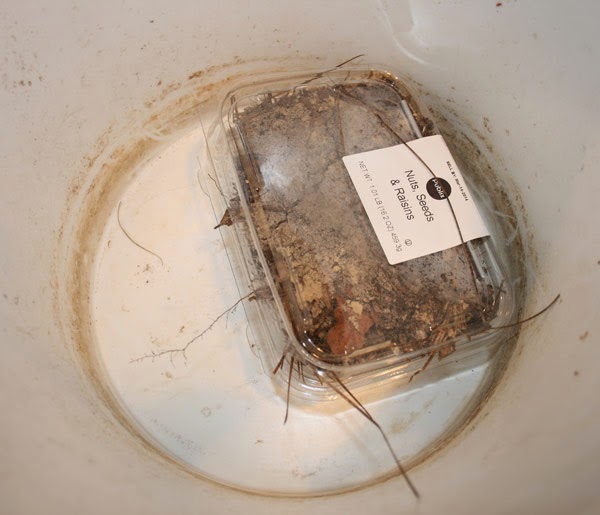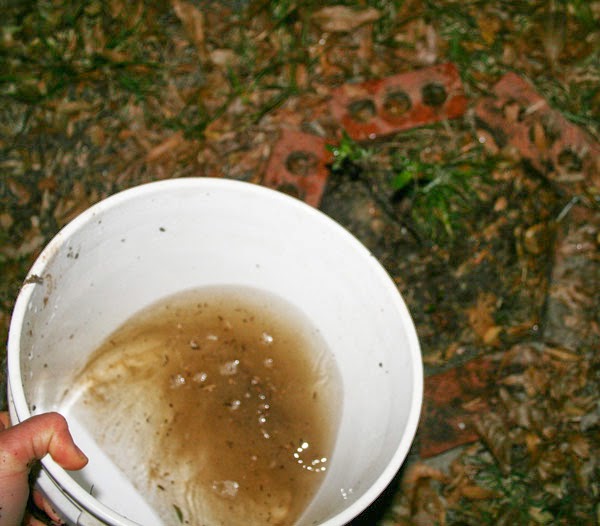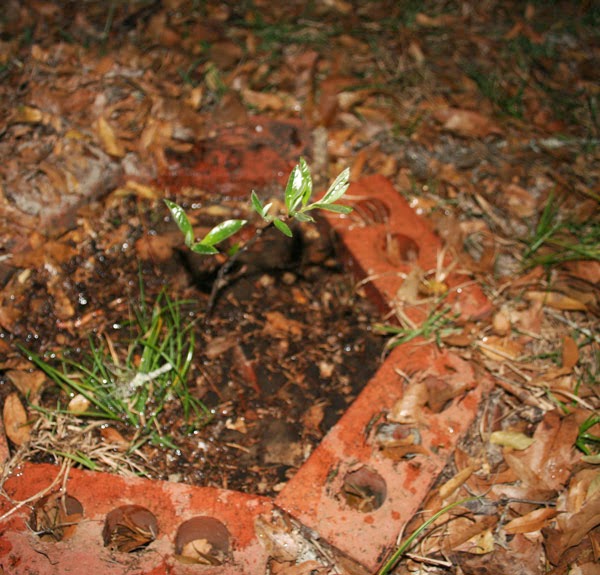Making a fungi inoculant probably isn’t on the top of most gardener’s “to-do” lists – and it may smack of voodoo for some – but indulge me for a moment.
I’ve read about the microbiology of soil and heard plenty about how long it takes for some trees to establish without having the right microorganisms in the soil. Fungi have complex relationships with a variety of plants and allow them to reach further through the soil and reach nutrients that would normally be inaccessible to the plant alone.
I planted a few of Terri’s native pawpaw trees last year – and I bought three more from her to plant this year.
When I was out with my wife today at a doctor’s appointment (scientists are still baffled by my remarkable transhuman DNA patterning), there was a weedy lot next to the parking area.
There in front of us, I spotted a few small pawpaw trees. They didn’t look all that happy, but I went further into the lot and found a larger group of very healthy specimens.
The thought hit me: I should grab some dirt from around the happy trees and take it home as a fungi inoculate for my pawpaws.
So I did.
When I got home that evening, it was rapidly getting dark but I went ahead and “treated” my trees in the fading light.
Here’s how I inoculated my pawpaws:
Step 1: I took dirt from around healthy trees
Step 2: I mixed some in a bucket of rainwater (not chlorinated water)
Step 3: I pulled back the mulch around my trees and poured on my fungi inoculant
That’s it.
Grow, little mycellium… grow!
There’s really no way to tell if this fungi inoculant works, at least not without a proper control group, but I think it’s a good practice.
I believe in the power of mycorrhizal fungi… do you?





6 comments
I bought paw paw seeds last fall off ebay. Nothing coming up yet in central Fl. The guy I bought them from said they would not come up until spring. I may need to replant.
They can take a really long time to come up… sometimes 6 months or more.
You could grow a large culture of the fungi to put in the soil around your plants using this process:
http://sqworms.weebly.com/imo-indigenous-microorganisms.html
The place of origin for the fungi should be the location of the wild plants, and if possible mix fungi from a number of different colonies, or at least one with most similar microclimate to your plants'.
Very, very interesting. Thank you for the link.
I believe in the power of mycorrhizal fungi… do you? Yes!
When I inherited this farm the Boysenberries were under an apple tree so that was probably the source of the dominant mycorrhizal connection. The tree had to be removed for the new house so I dug up all the crowns I could and transplanted them to a field location. The line crew had left me a truck load of wood chips which had aged enough to be clumped by the mycelium. I dug 2 ditches to make 2 rows and put the crowns in the soil and filled the ditches with the wood chips. after that I got the large vines and berries like we had on our original farm. I have been mulching with grass but they are beginning to lose vigor but I am getting a chipper gifted so I will be able to add some more wood.
Yes – I think the wood makes a difference. That’s very cool.
Comments are closed.